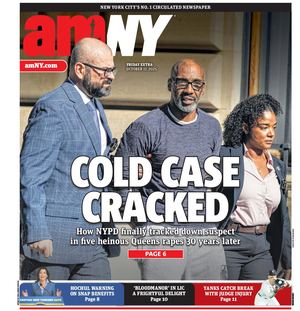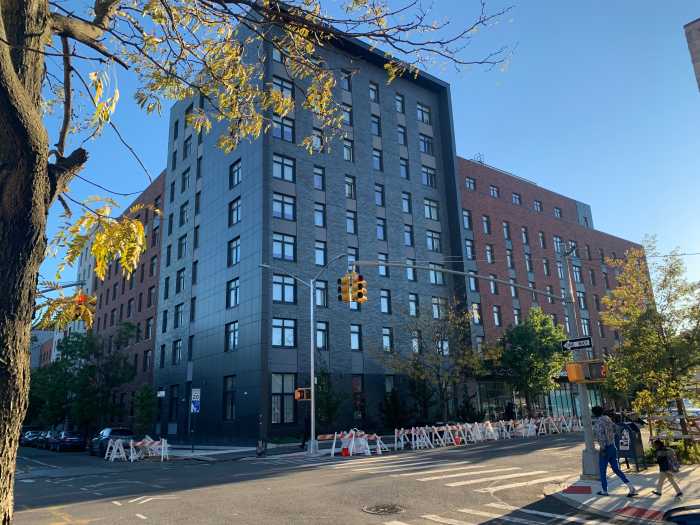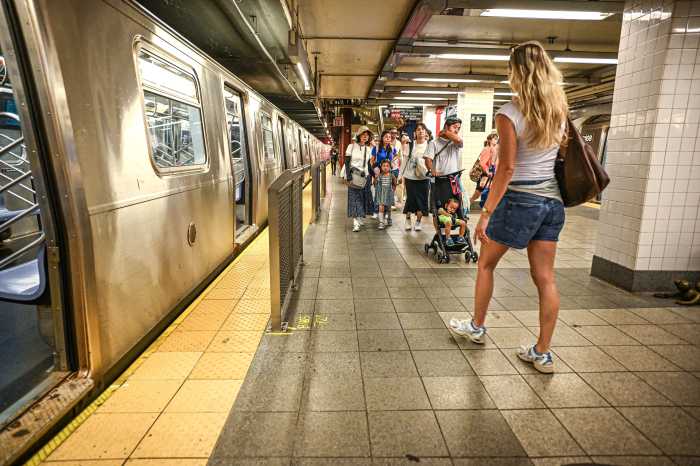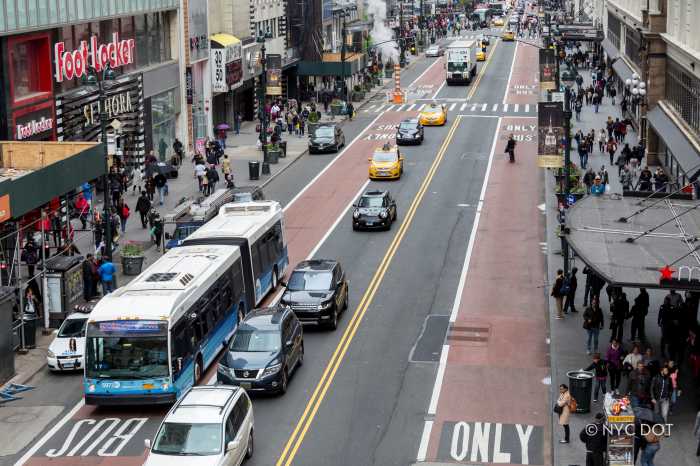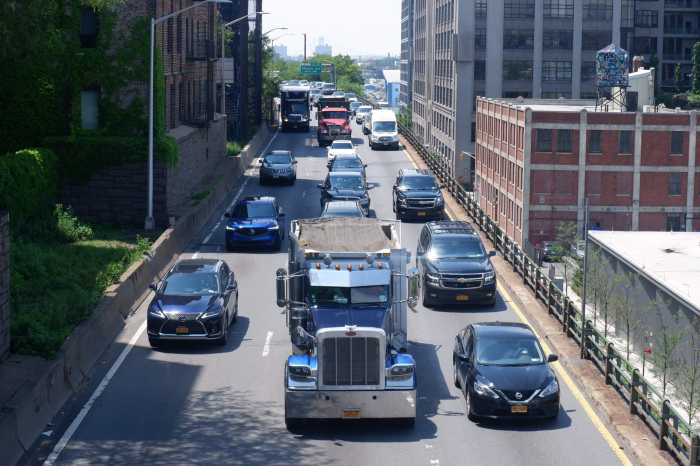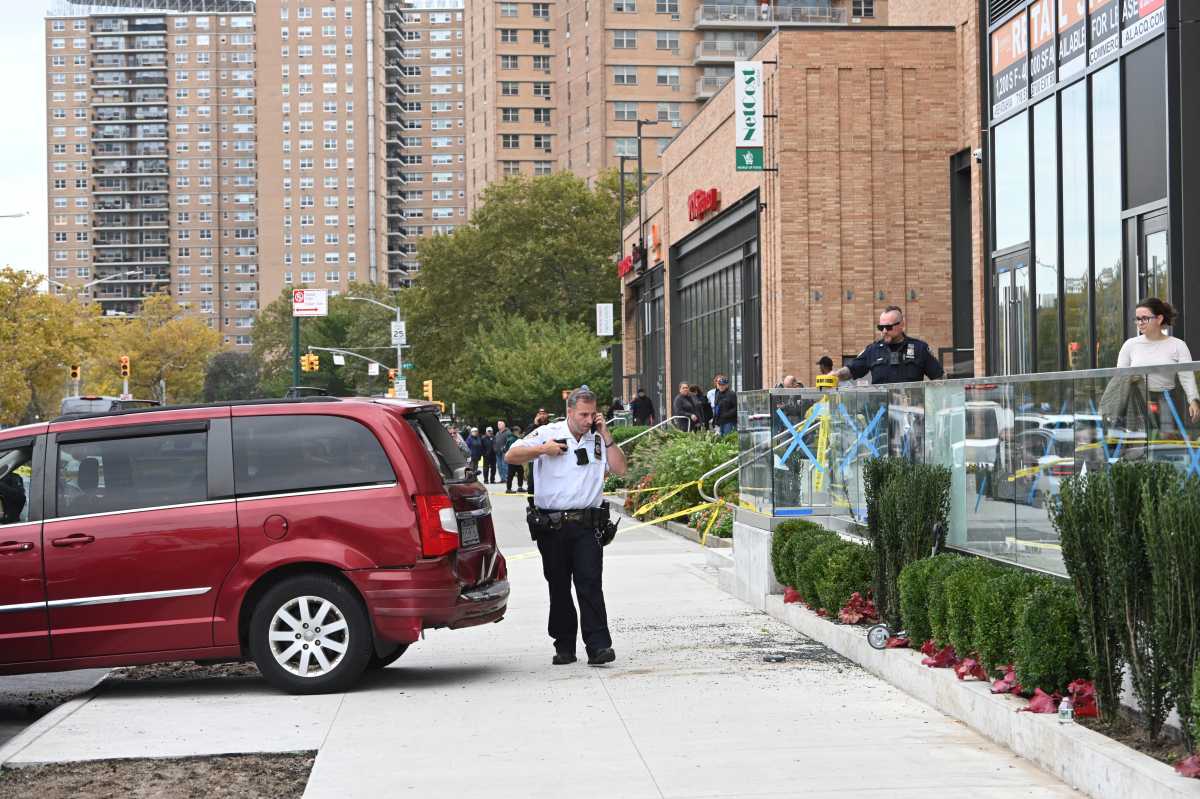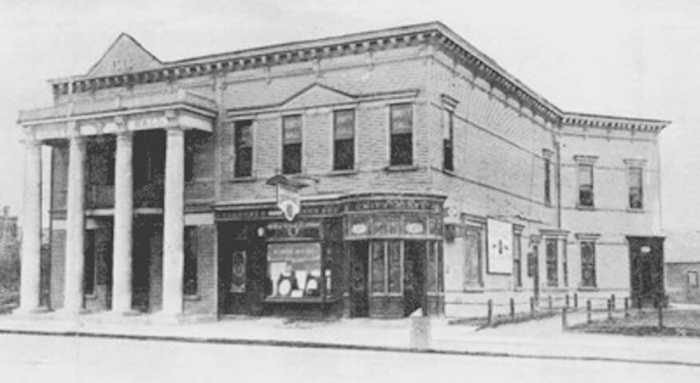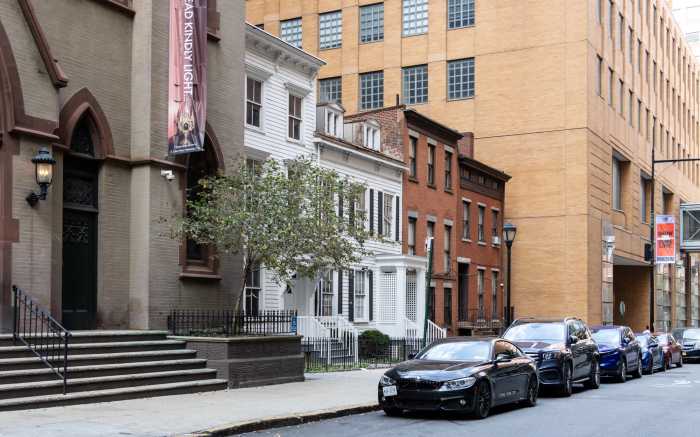
The policing of turnstile jumping in Brooklyn is disproportionately targeting poor African-Americans, according to a report published Monday.
Arrest rates for fare evasion, known as “theft of services,” in 2016 were most strongly correlated not with crime rates but with predominantly poor, black neighborhoods in the borough, data show in the report, “The Crime of Being Short $2.75.”
Its author, the Community Service Society of New York, believes it paints a picture of inequality through “racialized policing” that unnecessarily shuffles thousands of New Yorkers through the criminal justice system each year.
“To a certain extent, this is like shooting fish in a barrel. You go to the poorest neighborhoods where people often don’t have enough money even for a single fare,” said David Jones, the president and CEO of the Community Service Society of New York and MTA board member. “This is basically a crime of poverty. I keep talking about ‘Les Misérables’ and how this is effectively stealing bread from New Yorkers.”
The NYPD arrested 4,054 turnstile jumpers across Brooklyn’s 157 subway stations last year, according to the report. Sixty-six percent of those arrested were black and 87 percent were men. Stations in Bedford-Stuyvesant, Crown Heights, Brownsville, East New York and in poorer areas of Williamsburg and Bushwick saw the highest activity of arrests.
The Junius Street station of the No. 3 train and the Atlantic Avenue station on the L line experienced the highest number of arrests compared to ridership. There were 11 arrests per 100,000 MetroCard swipes at Junius Street and 8 per 100,000 MetroCard swipes at Atlantic Avenue.
Police officers have the discretion to issue an arrest or a $100 summons for commuters they catch jumping an MTA turnstile. The department has insisted in the past that it only arrests repeat offenders or those who are also caught committing other crimes, such as carrying weapons or drugs.
But the department had stopped 140,000 people for jumping turnstiles last year, according to Jones — or “the equivalent of stopping an entire American city,” he said.
“If I stop randomly in Wall Street 140,000 people, I bet you I could get the same yield in serious crime,” Jones said. “While the NYPD says it’s discretionary for officers, whether they provide a summons or not, clearly they don’t give the benefit of the doubt to certain riders.”
In a statement, the NYPD refuted the report’s findings. The department said it assigns its resources within the transit system based on a number of factors, including ridership levels, crime and quality of life conditions and citizen complaints.
“The public is fully aware of the fact that fare evasion is illegal. People who commit fare evasion are subject to a summons or arrest wherever and whenever these offenses are observed,” the department said in the statement. “When offenses are observed, police officers are expected to address them. We take enforcement action against those individuals who commit the offenses.”
Jones said the amount of strategy and effort focused on catching fare evasion was “backwards” and “disturbing.” Fare evasion accounts for about 74 percent of all the summonses and arrests police issue in the MTA system, made possible by police officers who hide in stations to catch fare beaters in the act.
Through August of this year, police have arrested a total of 12,577 people for jumping turnstiles and issued 38,882 summonses, according to the report, though it does not include an analysis of the citywide data. Jones said his organization had difficulty obtaining details from the NYPD. Much of the Brooklyn statistics were provided by Brooklyn Defenders.
The City Council on Monday will hear legislation from Queens Councilman Rory Lancman that aims to make policing of the issue more transparent. His bill would require the NYPD to publish more detailed data online — including the age, sex, race and station location of those arrested. The department has recently begun offering totals to the MTA board after several requests from Jones.
The end goal for Jones and Lancman is the decriminalization of the offense citywide, following in the steps of cities like Seattle and Portland. The first major move in that direction came in June, when Manhattan District Attorney Cyrus Vance announced that his office would no longer prosecute those charged for fare evasion “unless there is a demonstrated public safety reason to do so.”
“Every actor within the criminal justice system should be constantly looking to make sure the heavy hand of the criminal justice system is appropriately calibrated to the offense and the harm to the public,” Lancman said. “I frankly don’t think that someone jumping a turnstile should face criminal penalties; if I don’t feed the meter when I park my car, a cop doesn’t jump out and put handcuffs on me.”
The Community Service Society also favors taking a more deterrence-oriented approach to fare evasion by placing signage warning of the offense’s penalties around subway stations and by keeping a more visible police presence outside turnstiles. It’s also been a vocal champion of subsidizing half-fare MetroCards for low-income New Yorkers. Mayor Bill de Blasio incorporated that policy in his proposed millionaires tax to fund transit, though it faces a tough sell in Albany.
“Having grown up in Crown Heights, myself, we did some really stupid things. But I had a network of people backing me up,” Jones said. “Without that this could become just horrific. For people who are not career criminals, we should not be putting them through this.”
